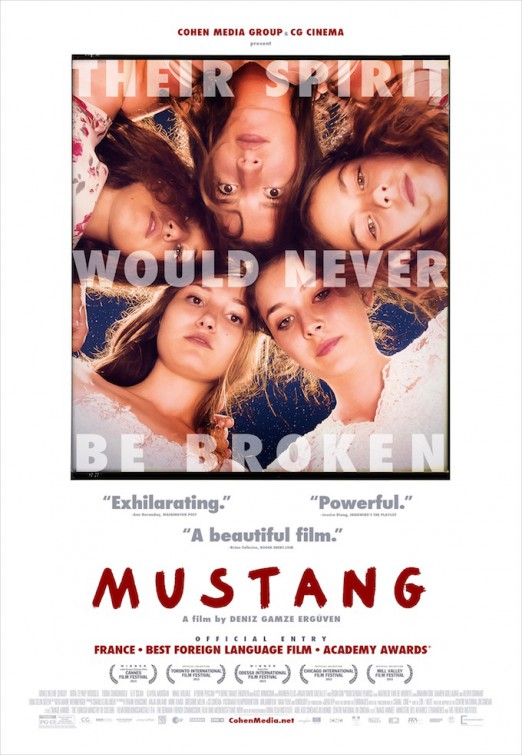The Lady in the Van
Miss Mary Shepherd is an aging homeless woman struggling with physical decline. Her home is a broken down van which she parks in the neighborhood of Camden, in London. BUT Mary isn’t some lovable scamp. No, far from it. She’s a cantankerous old shrew to be quite honest. Eccentric and ill tempered, she isn’t the […]
Mustang

Mustang is set in a remote Turkish village and depicts the life of five young sisters. Our tale concerns them all but is more centered on Lale (Güneş Şensoy). Her teacher at school is leaving for Istanbul. After saying goodbye, she accompanies her sisters on the walk home during a beautiful sunlit day. On the way, […]
Concussion

Before I launch into my review of Concussion, I thought a little primer on biology might help. So the brain floats inside the skull surrounded by something called cerebral spinal fluid (CSF). When the body is suddenly stopped after a blow to the head, like after being tackled for example, the brain continues to move […]
Daddy’s Home
I wasn’t going to review Daddy’s Home. I absolutely hated it. So much that I didn’t even want to ever think about it again. But then it became a hit. Since Dec 18th Star Wars: The Force Awakens has loomed large over everything else at the multiplex. That makes the success of Daddy’s Home even […]
The Hateful Eight
Before I begin my review, I must commend Quentin Tarantino for his commitment to cinematic style. The director has always been a student of film. He loves the medium and is well versed in its history. His latest was photographed using Ultra Panavision 70, a widescreen process usually preceded in print by the adjective “glorious”. […]
Anomalisa
Anomalisa is unlike any animated movie I’ve ever seen. Past the muddled din of inane chatter, the picture opens to a cloud bank. A plane is flying through the sky. Michael Stone (David Thewlis) is traveling to Cincinnati. A successful writer, he’s going there to give a motivational speech on customer service. It’s not immediately […]
Online Film Critics Society Awards 2015
2015 was a great year for film. I know. I say this every year, but what can I say? I love movies. This was my third year as a member of the Online Film Critics Society. The OFCS is the largest, most respected organization for movie critics whose work appears primarily on the Internet. I […]
Joy
The Joy of the title is Joy Mangano. For those unfamiliar, she is an American inventor who created the Miracle Mop – a plastic implement “with a head made from a continuous loop of 300 feet of cotton that can be easily wrung out without getting the user’s hands wet.” Although a modest succes initially, […]
In the Heart of the Sea
In the Heart of the Sea is a solemn drama of outmoded style. It concerns the adventure that inspired Herman Melville’s 1851 novel Moby-Dick. Our 19th century sea faring tale begins with the American novelist (Ben Whishaw) visiting old Thomas Nickerson (Brendan Gleeson). Thomas was once a cabin boy and is the sole living survivor […]
The Big Short
The Big Short seeks to educate as well as entertain. The subject is the credit crisis of 2008 brought on by the build-up of the housing and credit bubble during the 2000s. In other words, it’s about a group of guys who saw a chance to bet against the risky business loans being offered by […]
